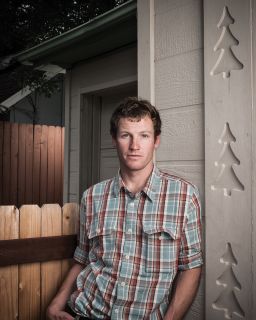Editor’s Note: Kyle Dickman is the author of “On The Burning Edge: A Fateful Fire and the Men Who Fought It” (Ballantine Books, 2015), a contributing editor at Outside Magazine and a former wildland firefighter. He spent five seasons fighting wildfires in California. His reporting has been nominated for a National Magazine Award and anthologized in Best American Magazine Writing. The opinions expressed in this commentary are his.
Story highlights
Dickman: U.S. government spends more than a billion dollars annually fighting fires but firefighters can't perform miracles
He says homeowners need to do their part by making their homes, property fire resistant
The Forest Service is already predicting that it will spend as much as $1.6 billion protecting homes, towns, and watersheds from wildfires this summer. In all but two of the past 15 years the agency has spent more than a billion dollars fighting fires, yet there’s little evidence that the increased spending is doing anything to control the flames. The blazes just keep getting bigger and more destructive.
To blame for the paradox are America’s drought-cured forests, decades of failed fire policy, and a fierce attachment to the idea that wildland firefighters are still capable of controlling blazes that are burning more intensely now than at any point in history. Solving the wildfire crisis is going to require policy changes. It also demands that the 140 million Americans living in fire-prone areas start proactively preparing for the flames.

Despite the fact that more than 60,000 wildfires burn most years, less than 2% of the 70,000 communities in fire-prone lands have done anything to prepare themselves. Instead, they rely on firefighters to save their homes, businesses, and lives.
Who can blame them? In the public consciousness, firefighters are heroes – highly trained and selfless men in red trucks who pull children from burning buildings or rush headlong into sky scrapers fated to collapse. Firefighters are heroic, and psychologically, it’s soothing to trust that they’ll always be there to pull victims from the flames.
But asking firefighters to risk their lives to save unprepared homes from the most volatile blazes is like asking the National Guard to control a hurricane. It’s negligent. Even still, firefighters want to help people and put their training to use, and it can be hard for these brave men and women to recognize the limits of their abilities.
Today’s megafires, those that burn as much as an acre of enormous pines every second for 14 hours straight, are that limit. In Yarnell, Arizona, in 2013, we saw what happens when a megafire clashes with firefighters’ heroic inclinations and a town’s desperate need for help. Nineteen members of the elite Granite Mountain Hotshots died trying to protect Yarnell. An official investigation later found that there was nothing the hotshots could have done to save the town from the flames.
In the aftermath, some of the 127 homeowners who lost their houses during that blaze sued the State of Arizona for failing to protect the town. The judge threw out the lawsuit, and in doing so, gave active support to the rarely spoken truth that firefighters simply cannot stop the highest intensity fires. We’re witnessing that reality now more than ever.
Two decades ago, less than a thousand homes burned every year in America. Today, wildfires are burning six times more acreage than they did just 40 years ago, and almost 3,000 homes go up in smoke every fire season. There are, however, things that homeowners can do to protect their houses and keep firefighters safe.
For state governments and communities, there are lessons to learn from Australia’s fire-protection model. There, the government’s wildfire policy, called “Stay or Go,” requires that residents create defensible space by regularly thinning the brush and trees around their homes and train in basic firefighting tactics. Australians are encouraged to stay and help fight fires when the flames approach their houses, but if they decide to flee, they must do so at the first sight of smoke.
America doesn’t have such a policy. The rule of thumb here is best described as, “Hope, Pray, and Run.” In other words, hope that fires don’t start, pray that firefighters put them out when they do, and run when the flames burn toward houses.
Australia’s “Stay or Go” policy would never work in the U.S.. In the West, dry grass and forests, steep mountains, and strong winds lead to fires far too explosive for amateurs to fight, and the idea that Americans fight the fires that threaten their houses is unrealistic and dangerous. But there are pieces of “Stay or Go” that federal, state, and county governments would be reckless not to adopt. Homeowners should be proactively preparing for fires–as they do in Australia–by thinning brush around their homes and installing fire resistant roofs and siding. If they do, they shouldn’t have to risk their lives to save their homes. Nor should firefighters.
With that edge alone, firefighters have a real and safe chance at protecting houses from even the worst of fires. In Yarnell, one ranch with adequate defensible space survived even after flames as high as 60 feet consumed the walls of brush that surrounded the buildings.
Millions more American are moving into wildfire-prone areas every decade. With climate change expected to lengthen and intensify western droughts and fires expected to keep pace, homes will keep burning in record numbers. Unless, that is, homeowners act on the most American of ideas and start protecting their own property.
Follow us on Twitter @CNNOpinion.



















